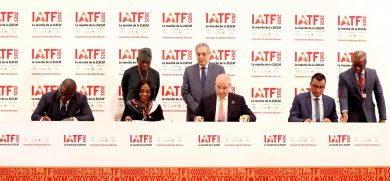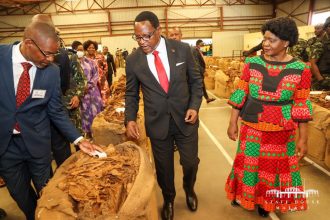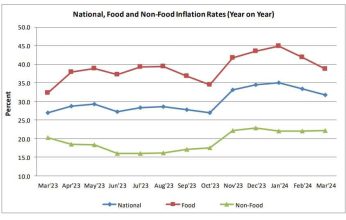Trade in services: the blind spot
India, with its population of more than 1.2 billion, is second only to China. It is actually envisaged that in less than 10 years, India is going to outdo China. China currently has about 1.4 billion people.
India’s growth in population is so alarming that, for instance, in the past 10 years India’s population has grown by about 120 million people. That is about 10 times Malawi’s population. Looks like the Punjabs are keen on putting a lot of pressure on their resources.
Perhaps this explains why our colleagues are so enterprising. For instance, recently there has been a boom in India in surrogate services, reproductive tourism, so to speak.
An entrepreneur would set up a facility replete with doctors dangling stethoscopes on their necks, nurses scuttling in white uniforms, midwives grinning in green uniforms and business managers donning pin stripped charcoal grey suits.
At the same time, you also would see expectant mothers at all stages of pregnancy from clinics, the cafeteria and the gymnasium.
If you come from the West, say America or Europe and you have the money, need a baby of your own but are too scared, are not fit to go through the normal natural process or are too busy for a pregnancy, you may look to the East most likely India for a womb-for-rent.
If interested one would have their egg fertilised and the egg would be implanted into the womb of the surrogate mother, God knows how this is done. Of course the surrogate mother would do this after being deemed fit for the service and agreeing to the terms of the contract.
This would cost about $12 000 (about K3.5million) in India but the same costs about six times in America. So, naturally, willing couples choose to go to the East after all the baby would not look Indian.
The surrogate fee would be split between the surrogate mother and the entrepreneur in what ratio they agree on. If let us say, they split it equally then the young lady would get about K1.7 million (about $6 800) for the nine months, that is about K200 000 (about $800) per month.
I am not suggesting that we should introduce this wombs-for-rent service in Malawi. My point is we need to be very enterprising and seriously look at trade in services as a vital part of our trade.
Our economy is made of about 45 percent services, 35 percent agriculture and about 20 percent industry. Surprisingly, 85 percent of our export revenue is from agriculture. Something is wrong here.
Based on this, my opinion is that either we do not export our services in significant amounts or we do not account for it.
For starters, services are those intangible products that you consume such as your education and TV programme. Perhaps it is due to its intangibility that we hardly recognise that we are importing or exporting a service.
For example, your medical services in South Africa is an import, your tuition from the London based University is an import, that foreign based preacher, and that musician from Nigerian are also imports.
On the other hand, that netball or football player in Australia or Spain is an export, the nurse that went to the United Kingdom is an export, the civil engineer in South Africa is equally an export and above all the tourists that come to Malawi to see our beautiful scenery are also exports.
By the way, there is a whole agreement under the World Trade Organisation (WTO) called the General Agreement on Trade in Services (GATS) and Malawi has its commitments in form of a services schedule under it.
It also has some commitments under the Southern Africa Development Community (Sadc), the Common Market for Eastern and Southern Africa (Comesa). Trade in services is also stuffed with its own special experts.
Although trade-in-services has all these agreements and is replete with its own specialists, policy makers usually give it lesser attention than its counterpart trade-in-goods.
This may be due to once again its intangibility and perhaps its complexity because listening to these trade-in-services experts and specialists, one wonders whether they are speaking in Greek, Chinese or a combination of the two languages.
As noted above, the services sector in Malawi takes up about half of our economy. But it does not matter when it comes to export revenue. Focusing on trade in services would, of course, mean investing in infrastructure and skills development.
This may also call on policy makers to regulate and coordinate all those trade in services activities that we are currently giving a blind eye.
Let us look at our traditional dances and tourism, the Masai Mara, Rumba or Samba dance way, our football players like the Brazilians, Ghanaians and Nigerians do. Examples are many, we may also look in banking, medicine, engineering, drama, and music.
On a lighter note, Malawians are not doing badly in the reproduction industry in the Sadc region.
A couple of months ago, a Batswana friend was so worried about the size of their population and was so troubled that they were not doing a good job. Down there they have more herds of cattle than people probably in the ratio two to one.
In my response I promised her to send 1 000 Malawian men to Gaberone for five years. These men will also be accompanied by experts in gondolosi from Lizulu. All this courtesy of our Botswana-Malawi bilateral trade agreement. That’s trade in services for you.
Feedback: ihelema@gmail.com





